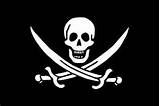Contents
- Introduction
- Preface
- Overview
- Relief Valve
- LECTURE 1: Why We Are In The Dark About Money
- LECTURE 2: The Con
- LECTURE 3: The Vatican-Central to the Origins of Money & Power
- LECTURE 4: London The Corporation Origins of Opium Drug Smuggling
-
LECTURE 5: U.S. Pirates, Boston Brahmins Opium Drug Smugglers
- THE BOSTON BRAHMINS
- Pirates Profiteers Banksters Traders Transfers
- Pirates
- White Slavers, Cargo, Property, Auctions, Amazing Grace
- $ Colonial Labor: Indentured Servants
- England to Philadelphia Slave Trade and Opium
- Extract from Charter of Freedoms and Exemptions to Patroons 1629
- The Definitive Treaty of Peace
- Pennsylvania Charter of Privileges 28 October 1701
- Opium Trade -- American Drug Smuggling Pirates
- Opium In America
- 1% Power Elite Networks
- 1% Elite Networks Bush & The CIA
- BEFORE Skull & Bones
- SKULL AND BONES
- Caribbean Pirates in the American South
- Who Were the Tories
- The Golden Age of Imperialism Opium Act 1908
- Global Dominance Groups
- The New World Order
- Characteristics of Fascism
- War on drugs
- Lecture 5 Objectives and Discussion Questions
- LECTURE 6: The Shady Origins Of The Federal Reserve
- LECTURE 7: How The Rich Protect Their Money
- LECTURE 8: How To Protect Your Money From The 1% Predators
- LECTURE 9: Final Thoughts
Europe Under Attack
Slaves in Barbary could be black, brown or white, Catholic, Protestant, Orthodox, Jewish or Muslim.
Contemporaries were too aware of the sort of people enslaved in North Africa to believe, as many do today, that slavery, whether in Barbary or the Americas, was a matter of race. In the 1600s, no one's racial background or religion automatically destined him or her for enslavement. Preachers in churches from Sicily to Boston spoke of the similar fates of black slaves on American plantations and white slaves in corsair galleys; early abolitionists used Barbary slavery as a way to attack the universal degradation of slavery in all its forms.
In the first half of the 1600s, Barbary corsairs - pirates from the Barbary Coast of North Africa, authorized by their governments to attack the shipping of Christian countries - ranged all around Britain's shores. In their lanteen-rigged xebecs (a type of ship) and oared galleys, they grabbed ships and sailors, and sold the sailors into slavery. Admiralty records show that during this time the corsairs plundered British shipping pretty much at will, taking no fewer than 466 vessels between 1609 and 1616, and 27 more vessels from near Plymouth in 1625. As 18th-century historian Joseph Morgan put it, 'this I take to be the Time when those Corsairs were in their Zenith'.
Unfortunately, it was hardly the end of them, even then. Morgan also noted that he had a '...List, printed in London in 1682' of 160 British ships captured by Algerians between 1677 and 1680. Considering what the number of sailors who were taken with each ship was likely to have been, these examples translate into a probable 7,000 to 9,000 able-bodied British men and women taken into slavery in those years.

HOW WOULD AFRICANS KNOW IRISH WORDS?
FROM CAPTURED IRISH SLAVES - BUCCANEER IS AN IRISH WORD
Carried off as captives by the Corsairs in the middles ages to Africa, maybe as early as the third century.
PIRATES

Pirates Code of Conduct - The beginnings of "The Vote" and Democracy.
Even though pirates were ruthless, many decisions on their ships were made by the entire crew.
They lived, in other words, by their own code of conduct.
View Video Clip >> Read the Story >>
Richard Coote, 1st Earl of Bellomont (sometimes spelled Bellamont, 1636 – 5 March 1700/1[1]), known as The Lord Coote between 1683 and 1689, was a member of the English Parliament and a colonial governor. Born in Ireland, he was an early supporter of William and Mary, siding with them in the Glorious Revolution. In 1695 he was given commissions as governor of the provinces of New York, Massachusetts Bay, and New Hampshire, which he held until his death. New England was recognized as an important source of ship masts for the Royal Navy, and the Board of Trade and the Admiralty sought to reserve suitable trees for the crown's benefit. Coote is buried in St. Paul's Chapel, Episcopal chapel located at 209 Broadway, between Fulton and Vesey Streets, in lower Manhattan in New York City. It is the oldest surviving church building in Manhattan.
Pirates: Serious In The Past, Very Serious Now
- Captain Kidd http://www.historic-uk.com/HistoryUK/Scotland-History/CaptainKidd.htm
- Captain Kidd http://en.wikipedia.org/wiki/Captain_Kidd_%28film%29
- Captain Kidd http://www.cindyvallar.com/williamkidd.html
-
Black Beard http://en.wikipedia.org/wiki/Blackbeard He was born Edward Drummond
Edward Teach or Blackbeard was one of the most feared of all the pirates, with a reputation for ruthlessness and cruelty. - Captain Blood - Peter Blood is a physician and an English gentleman who becomes a pirate out of a rankling sense of injustice. Barely escaping the gallows after his arrest for treating wounded rebels who were fighting the oppressive King James, Blood flees England and becomes enslaved on a Barbados plantation of buccaneers. When he escapes, no ship sailing the Spanish Main is safe from Blood and his companion/
"Chapter One: Mission in New York City" from Pirate Hunter: The True Story of Captain Kidd."
Then, on January 30, 1698, hope appeared on the horizon in the form of the four-hundred-ton Quedah Merchant. Here, finally, was a prize worth taking. The merchant ship, flying an Armenian flag, was heading north filled with silk, calico, sugar, opium, guns, and gold. Kidd gave chase and ultimately seized the ship and its cargo. It's at this point that the prosecution and defense stories, as presented at Kidd's trial, diverge. To prosecutors, this was clearly an act of piracy. The Quedah Merchant had an English captain, and it was carrying goods belonging to a leading member of the Indian emperor's court, who had powerful connections with the East India Company—an English venture. What's more, Kidd did not take the ship or his goods home to be judged a legal prize, as the contract with his Whig benefactors required. Instead, he dispersed some of the booty among his crew and kept the rest for himself. Kidd's crew members, taking advantage of the king's offer of immunity, testified to all this. [MORE] AND The Quedagh Merchant, also known as the Cara Merchant and Adventure Prize, was an Indian merchant vessel, owned by a man named Coirgi. The ship was captured by Scottish privateer, William "Captain" Kidd on January 30, 1698. After this ship's capture, Kidd attempted a return to New York to share in the treasure with the Governor of that colony, then on to England to pay off his backers. [OPIUM]
Kidd, for his part, insisted that the Quedah Merchant was not an English ship, its captain and connections notwithstanding. Its captain had shown him a "French pass," a document that clearly indicated this was a French ship. The French pass, Kidd maintained, would prove his seizure of the ship was entirely legal.
"Captain Kidd, scottish pirate and privateer. ... William Kidd was born in Dundee, Scotland, in 1654, the son of John Kidd a seaman ... their cannons with china dishes, as the china shards would shred the sails of the ships that he was attacking. ... sugar, opium, iron and saltpeter and worth a rumoured 70000 pounds.
17 May 1682 – 10 February 1722), born John Roberts, was a Welsh pirate (Welsh: Barti Ddu) who raided ships off America and West Africa between 1719 and 1722. He had "Sunday services" on his first vessel and was the most successful pirate of the Golden Age of Piracy. Bartholomew Roberts death is now commemorated by a celebration known as The Blackest Day, marking the day in which the Golden Age of Piracy came to an end. In January 1722 the pirate Bartholomew Roberts ("Black Bart") sailed into the Ouidah harbour and captured all the eleven ships at anchor there.
A General History of the Pyrates, published a few years after Roberts' death. The original 1724 title page credits one Captain Charles Johnson as the author. The defeat of Roberts and the subsequent eradication of piracy off the coast of Africa represented a turning point in the slave trade and even in the larger historys of capitalism
Henry Every also Avery or John Avery
was an English pirate mid 1690's. His career as a slave trader active along the West African coast in the early 1690s. Every had captured up to £600,000 in precious metals and jewels, making him the richest pirate in the world. In response to Every's attack on the Mughal convoy, a combined bounty of £1,000 (considered massive by the standards of the time) was offered for his capture by the Privy Council and East India Company, leading to the first worldwide manhunt in recorded history.
Before European countries (like Britain and France) turned against pirates and privateers, they had encouraged them (because piracy harmed Spain). Women, such as Anne Bonny and Mary Read, were also pirates at the time. Investigate the history in this video clip from the History Channel.
View Video Clip >> Read the Story >>